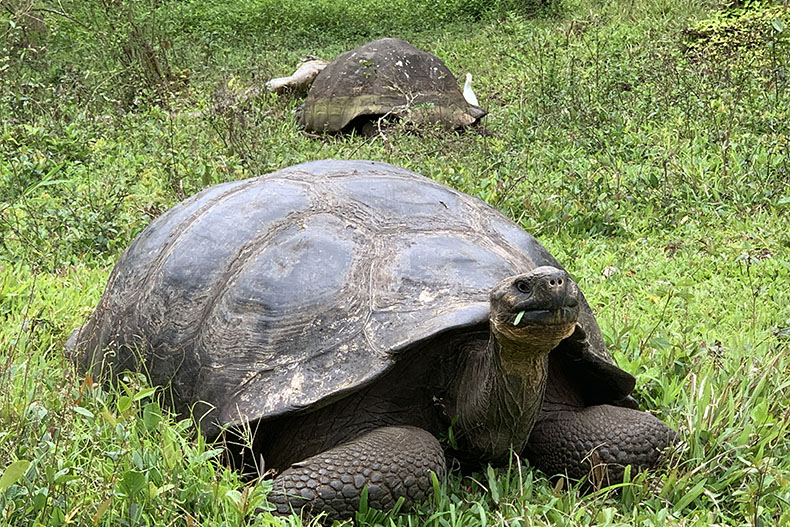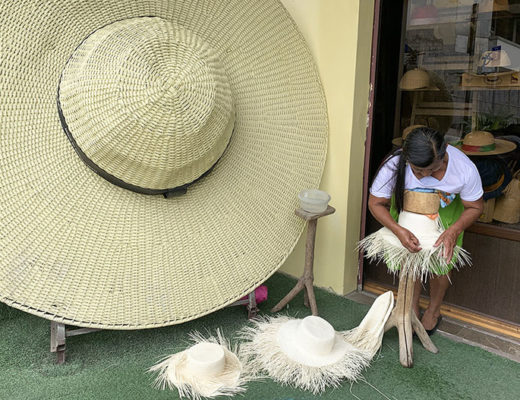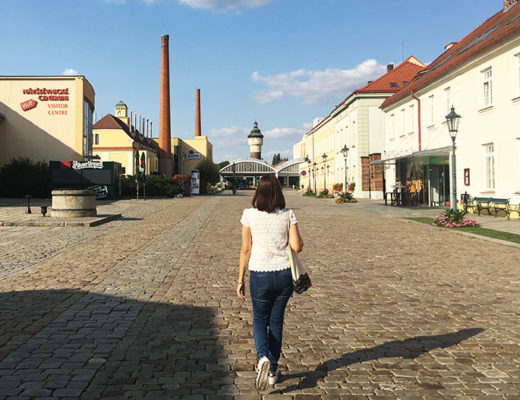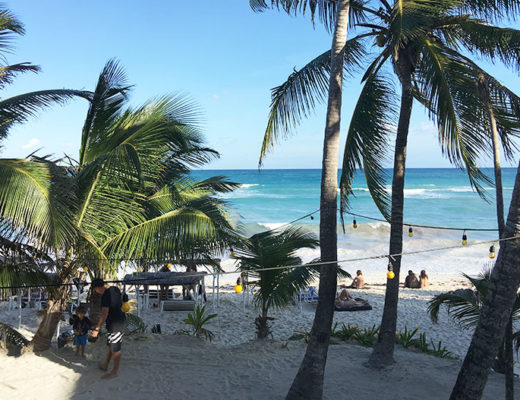I would dare to generalize that most of the travelers that love nature trips, dream of knowing the Galapagos. Although it may sound like a remote and difficult place to visit, in reality it is not if you plan it well. If you already have this Ecuadorian archipelago in your sights, I share some information that I think is important to know before traveling there.
What island to visit?
Galapagos is an archipelago made up of 13 major islands of volcanic origin and more than 200 islets and rocks; but only five islands are inhabited. Imagine the great diversity of flora and fauna that they possess, that Charles Darwin’s trip to this archipelago led him to write “On the Origin of Species”.
If you do not have many days to get to know the Galapagos, you will have to be very selective and prioritize what you want to see or the activities you want to do. Something very important when planning, is to take into account the transfer between the islands, check on what days there are flights and the schedules of the boats, as well as which islands you can visit on your own. With just three days, it was easy for us to make a decision: we would visit the islands of Santa Cruz and San Cristobal (the capital).
How to get there?
If you are already in Ecuador, you can fly from Guayaquil or Quito. Once at the airport -before checking in-, you have to go to the Galapagos Governing Council office to get the TCT card with which they control transit to the islands and which has a cost of $20 (the official currency in Ecuador is the US dollar). They will also check your luggage, since they control quite strictly what is entered to the islands.
Once you land in the Galapagos, you have to pay an entrance fee; we as foreign tourists paid $100 each. That money is used for the conservation of protected areas.
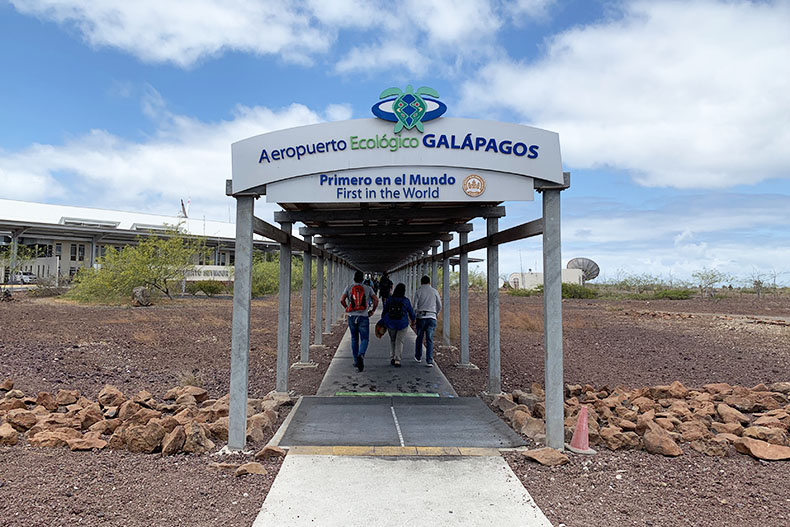
Santa Cruz Island
We stayed in Puerto Ayora, the most populated city in the Galapagos with almost 12 thousand inhabitants. Very picturesque, you can easily explore it by foot and travel by taxi to more remote places. On its main artery which is Darwin Avenue, you can find many restaurants, bars, shops and markets, without losing that feeling of a fishing village. And it is not uncommon that you come across some sea lions when walking around.
The first afternoon, we walked to the Charles Darwin Research Station, an essential point to learn more about the biodiversity that exists in the archipelago. Here, the scientists do their research to advise the Galapagos National Park and to do conservation work. You can also see some animals and learn a lot in the exhibition rooms.
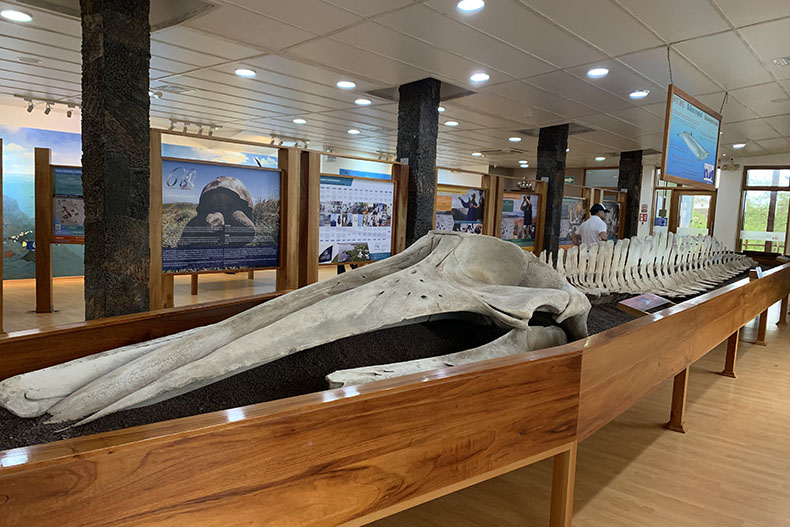
At night, we had dinner on Charles Binford Street, closed to vehicular traffic, where dozens of family restaurants are located that set up their tables on the street and offer the best dishes made with fresh seafood. They are simple restaurants but you eat very well and at relatively low prices, I say “relatively” because Ecuador seemed a bit expensive to me.
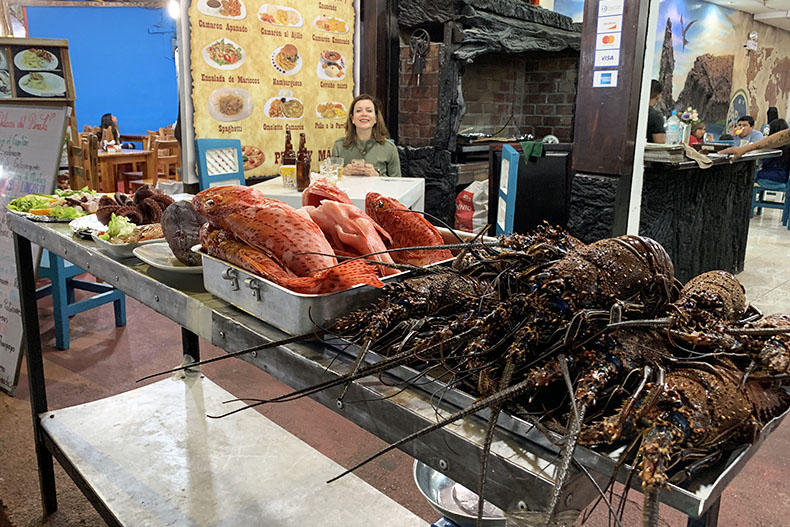
The second day was the most exciting for me. We started at the Las Primicias ranch to see the endemic giant tortoises of the Galapagos, where we were able to admire them in freedom -always respecting the required distance- and learn more about these beautiful reptiles that are the largest and longest living on the planet. I want to emphasize that they are not in captivity or anything, they are roaming freely and eating on their own, what they do at this place is actually protect them and their eggs.
There are eleven species of giant tortoises and they are in danger of extinction. Many of them died not only from predators, but also from pirates and merchants who came to the islands between the XVII and XIX centuries. Today there are protection and reproduction programs to prevent them from becoming extinct.
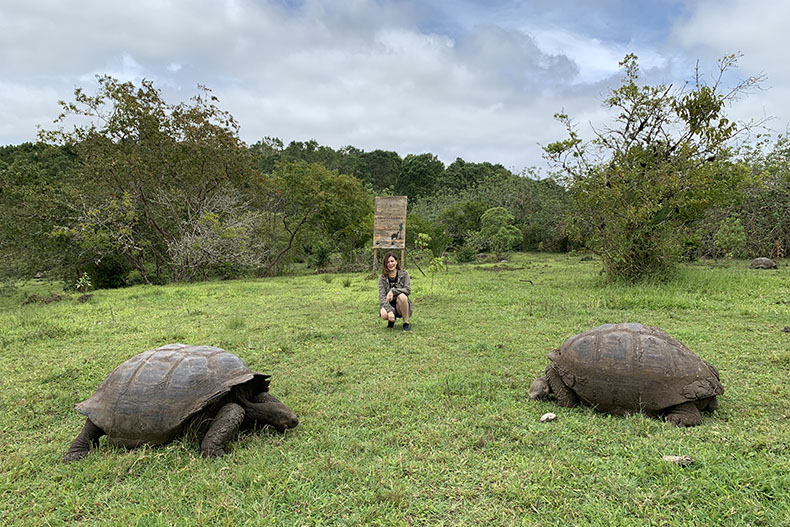
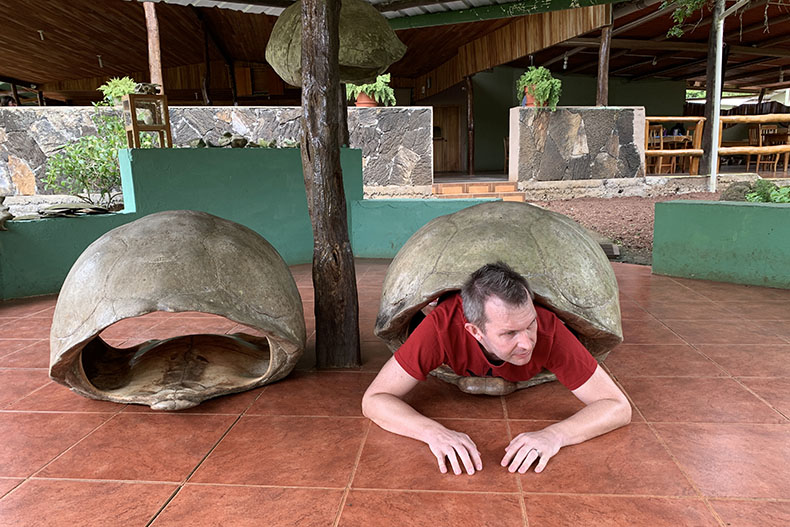
After the turtles, we went to one of the lava tunnels, which are impressive, underground and approximately 1 kilometer long. Although it is easy to walk through them, because there is light -at least in the one in Santa Rosa-, there are a few very closed spaces where you have to duck; that is, they are easy to walk, but not suitable for everyone. While they may be somewhat claustrophobic, it is worth making the effort to see them.
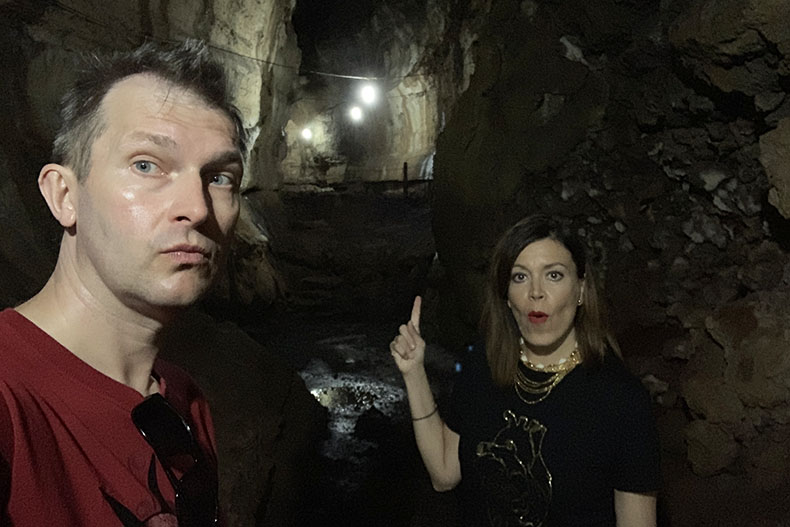
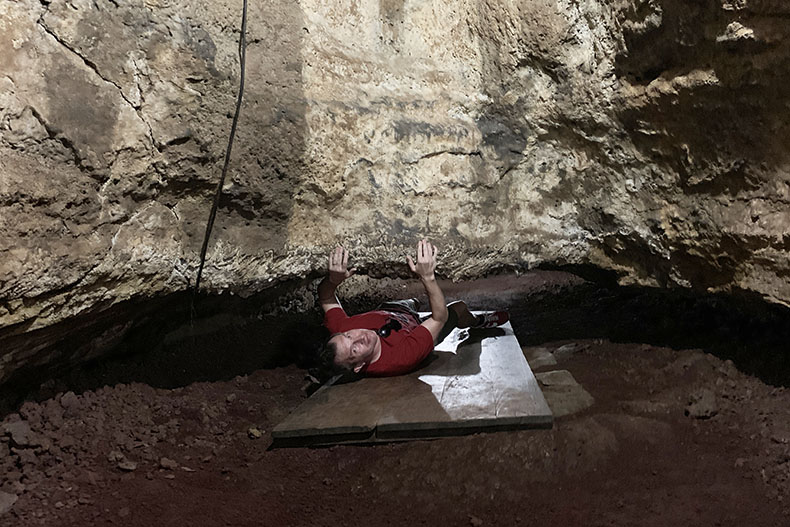
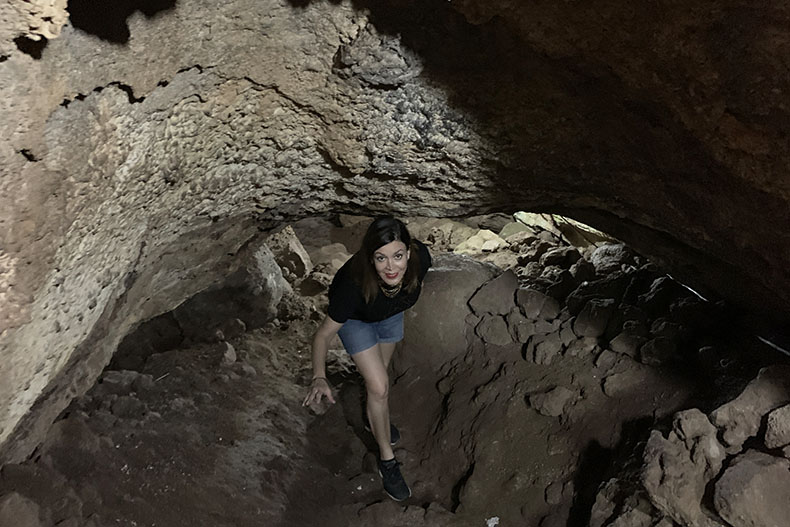
Very happy with what we had seen so far, we continued our adventure towards Los Gemelos to see the geological formations in the Scalesia forest. Los Gemelos (The Twins) are two huge pit craters (they are actually not craters), which were formed as the surface slowly collapsed. Here, you can admire the flora and fauna of the place, especially because there are 15 different species of Scalesia trees, all endemic to the Galapagos.
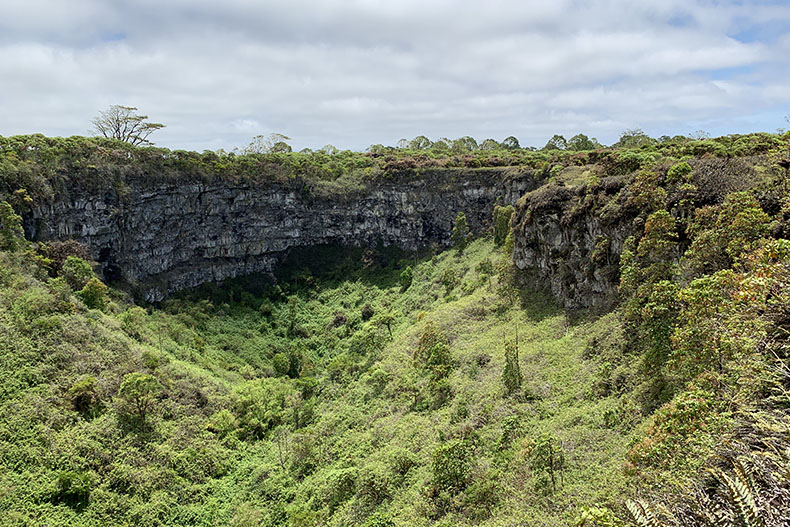
We ended our day at Tortuga Bay in search of the famous marine iguanas that you can only see in the Galapagos. The taxi dropped us off at the entrance, as the beach is protected and cannot be reached by car. You have to walk 2.5 kilometers until you reach the beach. For that same protection, you will not find any restaurants or shops, I do not even remember seeing bathrooms, something for you to take into account. In other words, it is not a place to go and spend the whole day lying on the beach.
The beach is beautiful, very wide with white sand and a rough sea. We spent some time enjoying it and while others wrote their name or the typical “I Love…” in the sand, we took the opportunity to advertise our travel agency, because this is what you do when your agency is like your baby and you show it off to the world ;-).
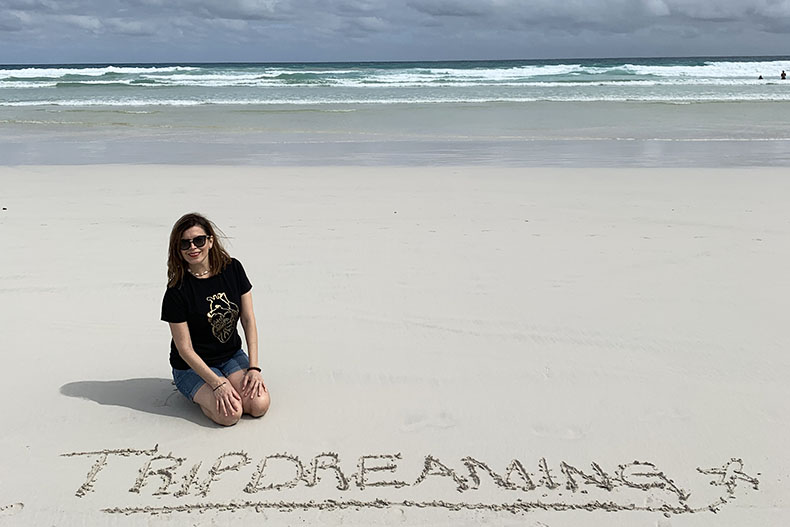
Suddenly, we discovered the black iguanas that we came to see, one on top of the other -because this way they protect themselves and get warm-, basking in the sun, enjoying life with great freedom, even with their little eyes closed; they looked like miniature Khaleesi dragons. If you do not see them in the sand, pay attention to the rocks because sometimes they are camouflaged as they are black like volcanic stones.
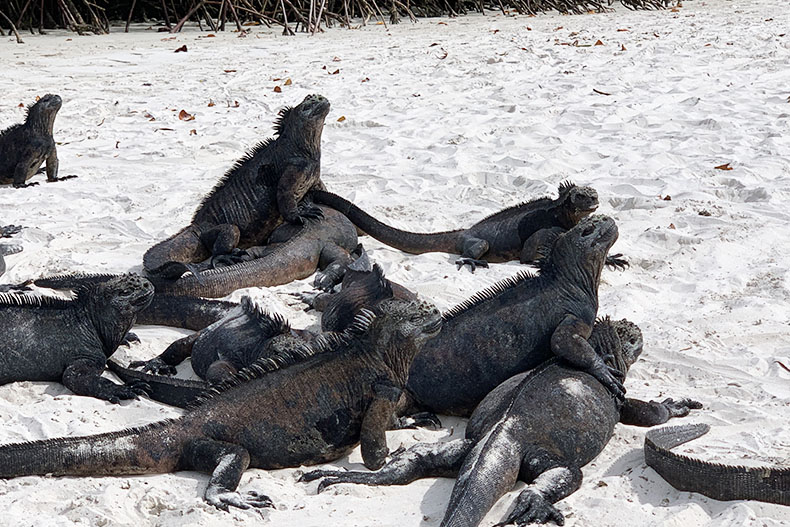
Finally, we laid down for a while to rest in the bay where the sea was calmer. There were a few other people enjoying the last hours of sun and the sea. We had certainly seen enough that day and still had to walk back for another hour to take the taxi to Puerto Ayora.
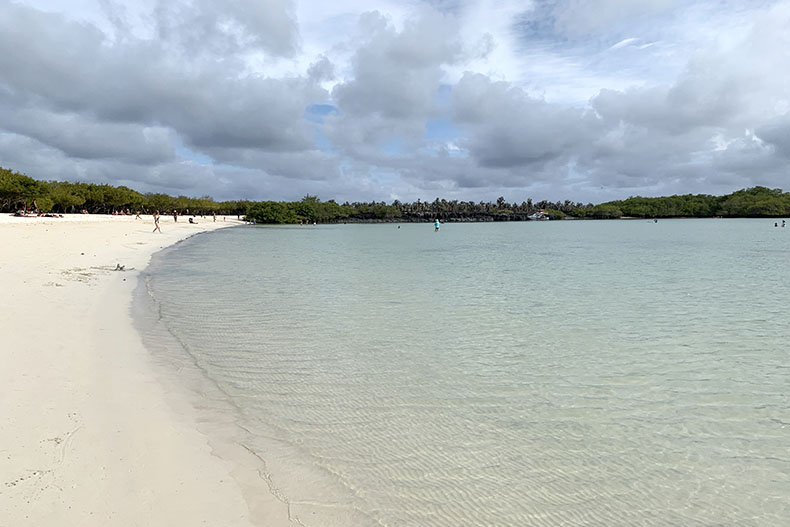
The next morning, we took a boat at 7:00 in the morning towards Puerto Baquerizo on the island of San Cristobal.
San Cristobal Island
The journey between the islands was a nightmare. It was raining, the sea was very brave and the waves were so high that the small boat jumped every time we passed one and hit very hard when it fell back onto the sea. I looked at the other passengers to see if it were my nerves or if I was exaggerating. The other tourists looked back at us with a nervous smile and grimacing “I hope this thing does not turn itself around”, but it reassured me to see the locals very calm, even taking a little power nap. I think that the boat would not have left if there would have been some kind of risk. Just in case, better do not eat anything before the boat ride ;-).
Upon arrival, frightened and dizzy, there was no time to lose as we still had a lot to discover. We checked in at the hotel, quickly ate a delicious bolón at a local stall (oh, because no scare will take away my hunger!) and headed to the beach La Lobería to see sea lions.
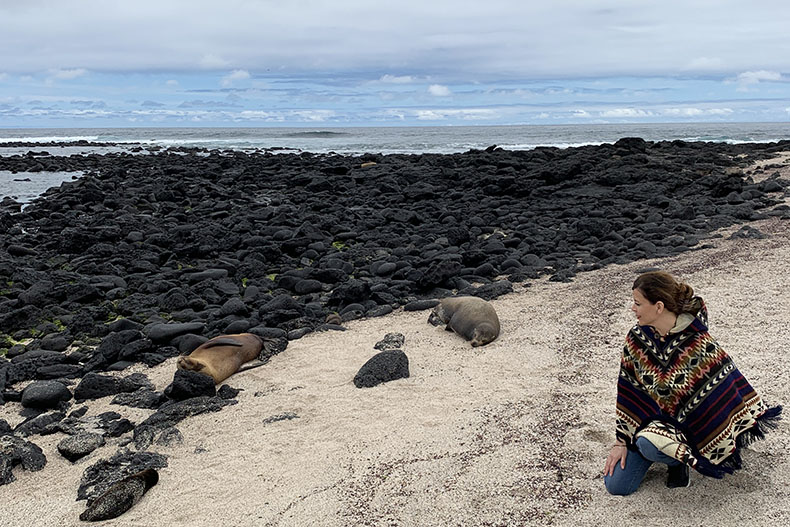
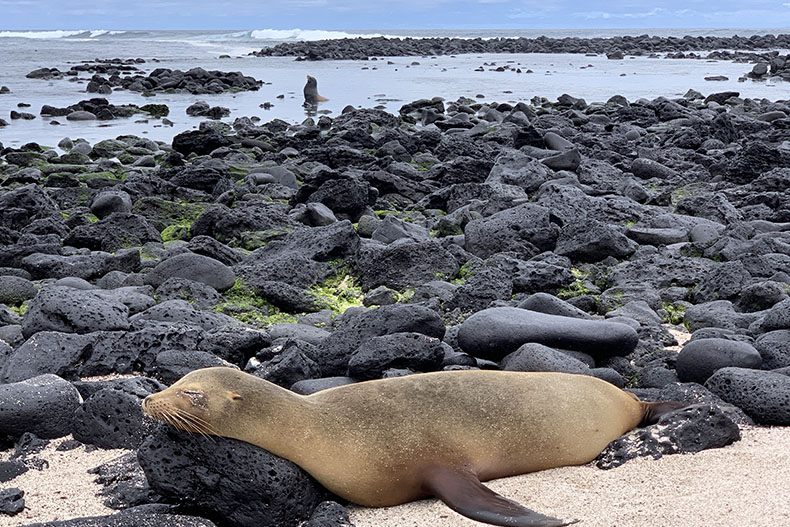
The next and last stops were Cerro Tijeretas and Punta Carola. We started hiking on the hill in search of birds, especially blue-footed boobies (I was dying to see them) and frigatebirds, but unfortunately we only saw a few flying around. But this tour was still great because it has beautiful viewpoints. In addition, there is a cove with crystal clear and calm water, perfect for snorkeling. We finished our tour walking again among sea lions and black iguanas, and taking photos from the lighthouse on the beach of Punta Carola.
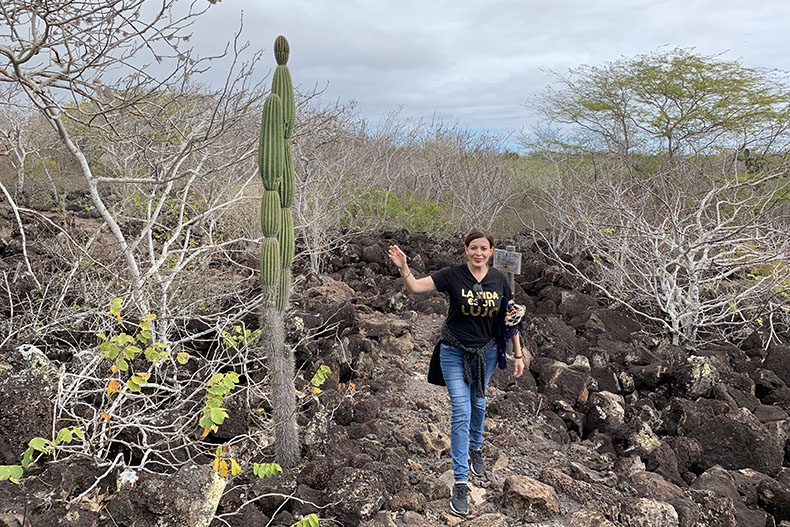
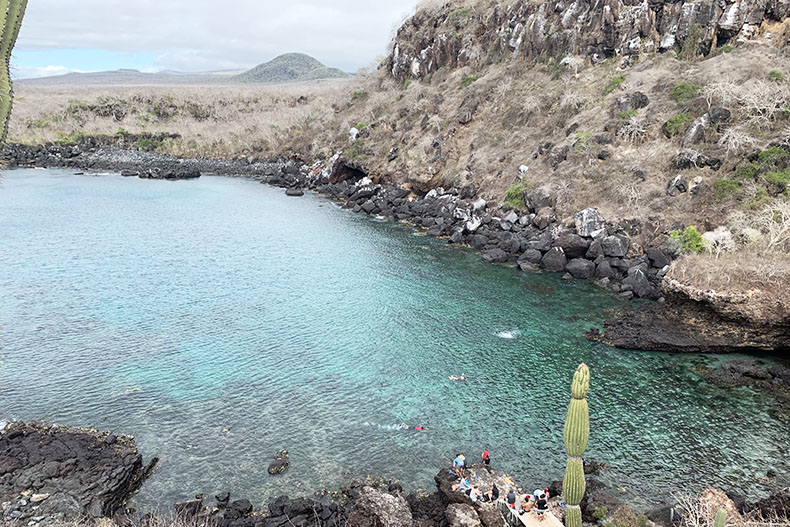
That last night in Galapagos, we had an excellent dinner in a restaurant called La Yapa, very simple, but very busy, where we ate the best grilled fish and patacones with cheese. I think it was the best dinner we had on our trip to the Galapagos.
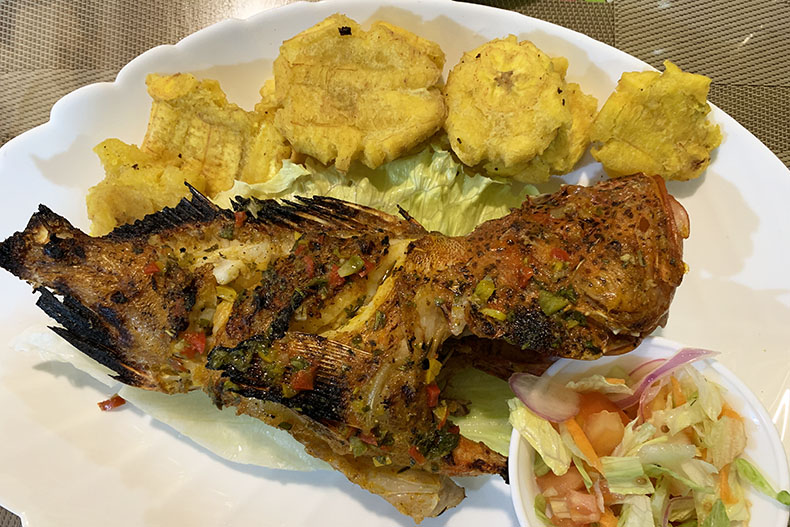
The advantage of San Cristobal is that its airport is only 5 minutes from the center, so we benefited from the last morning on the island to walk quietly along the boardwalk, saying goodbye to the animals and taking the typical photo with the letters of San Cristobal.
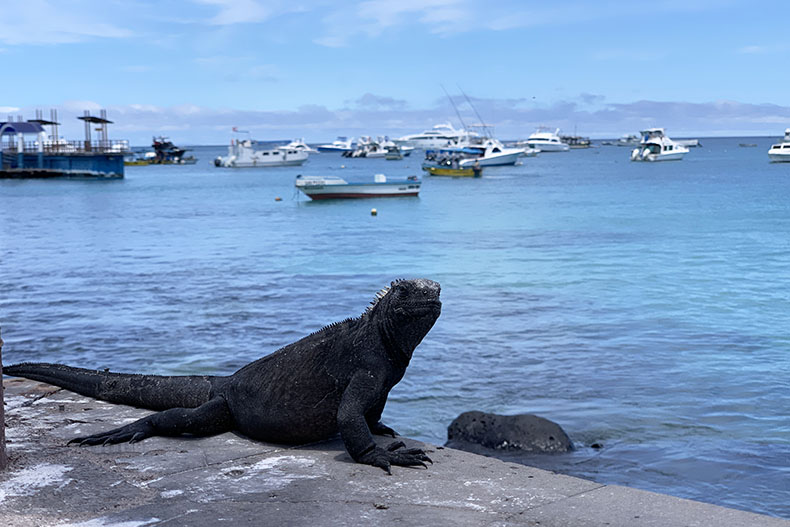
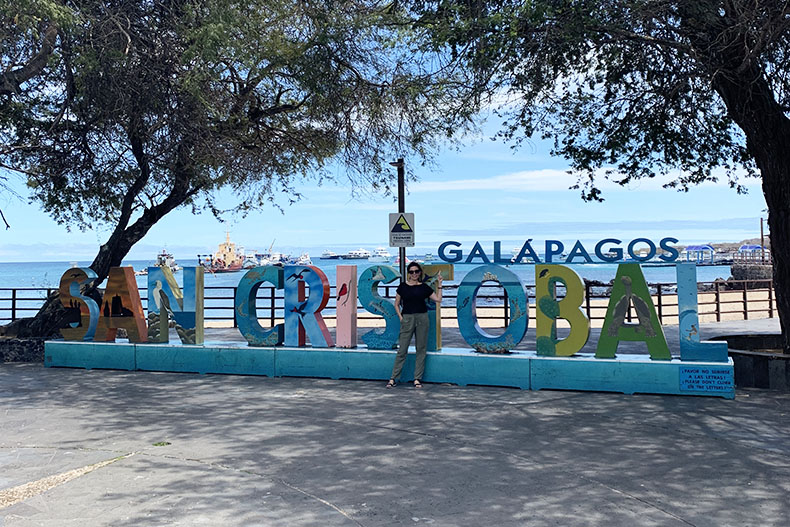
And so we ended our wonderful trip to the Galapagos and marked off one more destination from our list of places to visit before you die.
If you want me to design and organize your trip to the Galapagos 100% customized through our travel agency Tripdreaming, please contact me at silvia.lucero@tripdreaming.com, to plan this dream trip.
For editorial questions, please contact me at silvia.lucero@latrotamundos.com.

